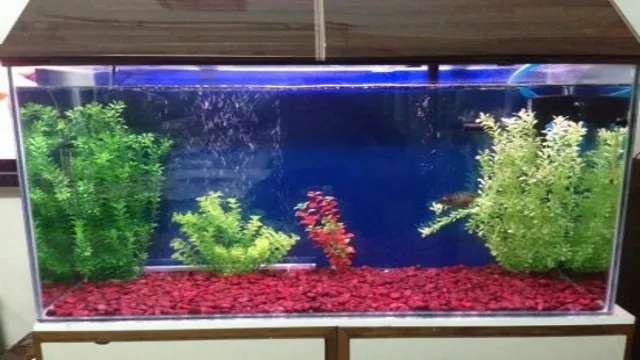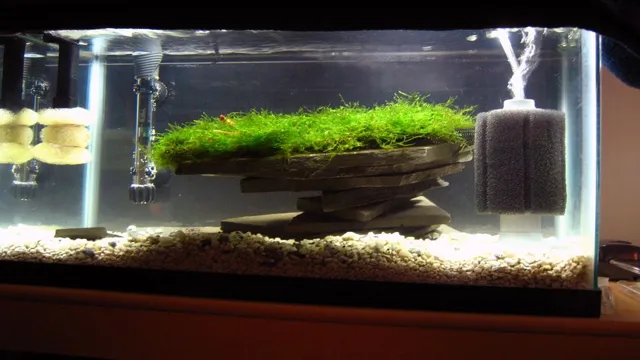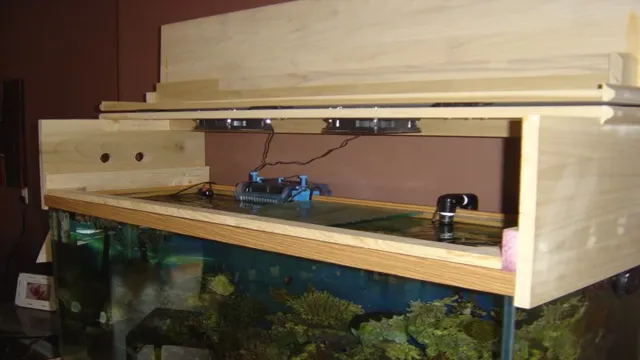How to Maintain Water Quality in Aquarium with Easy Tips – Essential Guide

Maintaining water quality in your aquarium is essential in ensuring the health and well-being of your fish and other aquatic creatures. Poor water quality can lead to a variety of problems such as disease, stress, and even death. As a responsible aquarium owner, it’s important to understand the factors that impact water quality and how to maintain a healthy environment for your aquatic pets.
One of the primary factors that affects water quality is waste produced by fish and other aquatic creatures. This waste can release harmful chemicals and toxins that can negatively impact the water quality. Additionally, overfeeding and inadequate filtration can also contribute to poor water quality.
To maintain healthy water quality in your aquarium, regular maintenance is essential. This includes monitoring water parameters such as pH, ammonia, nitrate, and nitrite levels, and performing routine water changes to remove excess waste and toxins. It’s also important to ensure that your filtration system is functioning properly and to avoid overfeeding your fish.
By maintaining water quality in your aquarium, you can help ensure the health and longevity of your aquatic pets, while also creating a beautiful and enjoyable environment to enjoy. So, take the time to learn about the proper care and maintenance of your aquarium, and enjoy the beauty and wonder of your aquatic pets for years to come.
Test Your Water Every Week
Maintaining the water quality in your aquarium is crucial for the health and wellbeing of your aquatic pets. One simple yet effective way to ensure your water is healthy is by testing it every week. Not only will this help you keep track of the water parameters, but it will also alert you to any sudden changes that could negatively impact your fish.
There are many easy to use water testing kits available that can measure various parameters such as pH, ammonia, nitrite, and nitrate levels. Once you have tested your water, it’s important to make any necessary adjustments, such as adding a water conditioner or doing a partial water change. By staying on top of your water quality, you can help create a beautiful and healthy environment for your fish to thrive.
Why Testing Matters
As a pool owner, it’s essential to keep in mind the importance of testing your pool water regularly. Testing your water once a week can help prevent equipment damage, ensure proper chemical balance, and maintain a healthy swim environment for you and your family. Testing your water can reveal imbalances, such as too high or too low chlorine levels or pH levels, that can cause issues like skin irritation and cloudy water.
Regular water testing can help you avoid these issues, helping you save money by preventing expensive repairs or maintenance. Overall, making a habit of testing your pool water every week is a crucial step in keeping your pool safe, healthy, and refreshing for everyone to enjoy.

What to Test For
Testing your water every week is crucial to maintaining healthy and safe water for you and your family. There are a variety of things to test for, including pH levels, chlorine and other chemicals, bacteria and viruses, and mineral content. pH is important because it can affect the taste and smell of your water and can also determine the effectiveness of chlorine in killing bacteria.
Chlorine levels are also important to ensure that your water is free of harmful chemicals. Testing for bacteria and viruses is essential to making sure your water is safe to drink and use. Finally, testing for mineral content, such as calcium and magnesium, can help you determine if your water is hard or soft, which can affect the longevity of your appliances and plumbing.
By consistently testing your water, you can make sure that it is not only safe but also enjoyable to use.
How to Test Your Water
Testing your water weekly is an essential process that guarantees the safety of your water supply. Every week, you should test your water to determine the quality, and to detect any contaminants that may harm you or your family. When testing your water, ensure that you use accurate and reliable testing kits that are readily available in the market.
The process is simple and straightforward. You start by taking a sample of your tap water, following the manufacturer’s instructions, and checking the results. You should also check the results against the standards set by the National Environmental Services Center (NESC) to guarantee the accuracy of your results.
By regularly testing your water, you can ensure that you are drinking clean and safe water that will keep your family healthy and hydrated. So, don’t take water quality for granted – test your water every week with a reliable testing kit to give yourself peace of mind.
Keep the Tank Clean
If you want your fish to thrive and live a happy life in their aquarium, you need to maintain high water quality. One of the most important steps you can take to achieve this is by keeping the tank clean. This involves removing excess food, waste, and debris from the substrate, rocks, and decorations.
You should also perform regular water changes to remove any accumulated toxins, nitrates, or other harmful substances. Make sure to use a good quality gravel cleaner to remove any excess waste from the substrate, and a siphon to remove debris that has accumulated in the corners and harder-to-reach areas. Regular maintenance will ensure the water quality stays at a healthy level, which is essential for the long-term health and happiness of your fish.
Remember, a clean tank is a happy tank!
Why Cleanliness Matters
As an aquarium owner, keeping your tank clean should be a top priority. There are a few reasons why cleanliness matters in your aquatic environment. Firstly, a dirty tank can harm your fish, leading to serious health problems and even death.
Without regular cleaning, waste and debris build up in the tank, making it harder for your filtration system to work properly. This can lead to an increase in ammonia and nitrate levels, which are toxic for your fish. Secondly, a dirty tank can be unsightly and affect the overall aesthetic of your aquarium.
Murky water and algae growth can make it difficult to see and enjoy your fish. Keeping a clean tank not only benefits your fish but also enhances your viewing pleasure. So, make sure to regularly clean your tank, change the water, and maintain your filtration system to keep your aquatic environment healthy and beautiful.
Regular Maintenance Tasks
Regularly cleaning your fish tank is essential to keep your aquatic pets healthy and their environment pristine. Neglecting this maintenance task can result in the growth of harmful bacteria, which could compromise the wellbeing of your fish. The frequency of cleaning depends on the tank’s size and the number of fish you keep.
A general rule of thumb is to perform partial water changes every week to remove excess waste and debris. Use an aquarium vacuum to suck up any debris at the bottom of the tank, and use an algae scraper to remove any algae buildup on the walls. If you notice discoloration or a foul odor in the water, it’s time for a full tank clean.
Remember to turn off any electrical devices and remove your fish before proceeding with a full tank clean. Regularly cleaning your fish tank is a small task that can make a big difference to the health of your aquatic pets.
Tips for Cleaning the Tank Safely
Cleaning the tank is an essential aspect of fishkeeping. However, it requires a lot of care and attention to ensure that the tank is cleaned safely. One tip for cleaning the tank safely is to avoid using any harsh chemicals or detergents as they can be harmful to your fish and other aquatic animals.
Instead, opt for natural cleaning solutions like vinegar, baking soda, or aquarium-specific cleaners that are designed to be safe for your fish. Before cleaning, ensure that you have unplugged all electrical equipment and removed any decorations or plants from the tank to prevent damage. Also, be sure to rinse your hands thoroughly before and after handling the tank to avoid contaminating the water.
Remember that maintaining clean water is crucial for your fish’s health, so cleaning the tank regularly will help keep your aquatic pets healthy and happy.
Feed Your Fish Properly
Maintaining water quality in an aquarium can be a daunting task, but it’s essential for the health and wellbeing of your aquatic pets. One crucial aspect is feeding your fish properly. Overfeeding can lead to excess waste and a buildup of harmful chemicals in the water.
On the other hand, feeding too little can cause malnutrition and weaken your fish’s immune system. To strike a balance, it’s recommended to feed your fish small amounts twice a day, only as much as they can consume within three to five minutes. You should also vary their diet to ensure they get all the necessary nutrients.
Pellets, flakes, frozen or live food options are all great options to keep your fish healthy and happy. By following these feeding guidelines, you’ll promote a healthy environment for your fish and maintain a high-quality aquarium.
Why Feeding Matters
Feeding your fish properly is one of the most critical factors in ensuring their health and longevity. Fish require a balanced and varied diet, just like any other animal. Providing them with the right type and amount of food is essential to keep them healthy and active.
Overfeeding can lead to a variety of problems, such as bloating, constipation, and even death. Underfeeding, on the other hand, can cause malnutrition, stunted growth, and weakened immune systems. To avoid these problems, it’s important to feed your fish the right amount of food, based on their species, age, and dietary needs.
It’s also important to vary their diet with a mix of dry and frozen foods, to provide them with the nutrients they need for optimal health. By feeding your fish the right way, you can ensure that they thrive and enjoy a long and healthy life.
What and How Much to Feed
Feeding your fish properly is essential for their health and vitality. Different species of fish have different dietary requirements, so it’s important to research what your fish needs before feeding them. Most fish are omnivores, meaning they eat both animal and plant-based foods.
You can provide a balanced diet for your fish by giving them a mixture of both types of food. Remember to also vary the food types to prevent your fish from becoming bored with their diet. Overfeeding can be harmful to your fish, so it’s important to give them appropriate portions.
A good rule of thumb is to feed them an amount that they can consume in two to three minutes, two to three times a day. It’s also important to avoid giving your fish too many treats or human foods, as these can upset their digestive system. By understanding your fish’s dietary needs and feeding them properly, you can ensure they live a long and healthy life.
How Often to Feed
Feeding your fish properly is an essential part of keeping them healthy and happy. But how often should you be feeding them? Well, it depends on the species of fish you have and their size. Generally, it’s a good idea to feed them small amounts multiple times a day, rather than one big feeding.
This prevents overeating, which can lead to health problems. For example, goldfish should be fed twice a day, while tetras only need to be fed once. It’s important not to overfeed your fish, as this can cause pollution in your tank and harm your fish.
A good rule of thumb is to only give them the amount of food they can consume in two minutes, and if there’s any leftover food, remove it. Remember, a healthy diet is the key to a healthy fish!
Monitor and Control Water Temperature
Maintaining proper water quality in an aquarium requires vigilant monitoring and control of the water temperature. Fish and other aquatic creatures are highly sensitive to temperature changes, and fluctuations can quickly lead to illness or even death. To maintain a healthy and stable environment, it’s crucial to invest in a reliable aquarium thermometer and regularly check the temperature.
Adjusting the water temperature should be done gradually, as sudden changes can cause stress and harm to your aquatic pets. You can keep the water temperature consistent by using a heater or chiller, depending on the needs of your aquarium’s inhabitants. By making sure the water is at the right temperature, you will create a healthy and thriving aquatic environment for your pets to live in.
Why Temperature Control Matters
Temperature control is an essential aspect of any industrial or commercial activity that involves water usage. Chemical and biological processes are known to be highly sensitive to temperature variations. This is why it is essential to monitor and control water temperature to ensure a consistent and uniform operation.
Proper temperature control not only guarantees the quality and safety of the product but also minimizes equipment breakdown and shutdowns. In fact, the correct temperature can also help you achieve high-quality results in any application. By monitoring temperature, you can optimize your process and cut down on costs.
So, whether it’s brewing beer, treating wastewater, or producing chemicals, proper temperature control is key. It can save you from a lot of stress and improve the overall efficiency of your operations to give you the optimal results that you are looking for.
Setting the Right Temperature
If you have fish or any aquatic pets, it’s essential to control the temperature of the water in their tanks. Different species of fish require specific temperatures for their survival and well-being. Water temperature fluctuations can cause stress, disease, and even death in fish.
That’s why a thermometer is a crucial tool for any fish owner. You should monitor the water temperature regularly and adjust it as needed using a heater or chiller. Knowing your fish’s preferred temperature range can help you provide the best environment for them to thrive.
Remember that the ideal temperature range for different fish species may vary, so ensure you research temperature requirements for each species you keep. Set the right temperature, and your fish will thank you by living a long and healthy life in their aquarium!
Maintaining the Right Temperature
Maintaining the right water temperature is crucial for the health of your aquatic pets. You need to constantly monitor and control the temperature to avoid any fluctuations that could harm your fish. Investing in a high-quality aquarium heater with a built-in thermostat is the best solution.
These types of heaters have sensors that monitor the water temperature and automatically adjust it accordingly. It’s also important to check the water temperature on a daily basis using a reliable thermometer. Remember that different fish species have different temperature requirements, so it’s essential to do your research to determine the optimal temperature for your fish.
By maintaining a consistent water temperature, you can ensure the longevity and well-being of your aquatic pets.
Use Appropriate Filtration and Aeration
When it comes to maintaining the water quality in your aquarium, appropriate filtration and aeration are crucial factors to consider. Not only do they help keep the water clear, but they also provide the necessary oxygen for aquatic life to thrive. A good filter helps remove debris, waste, and chemicals from the water, keeping it clean and safe for your pets.
An air pump, on the other hand, provides a steady flow of air that enhances oxygenation and circulation within the tank. This minimizes the buildup of harmful bacteria and ensures that the water remains well-oxygenated for aquatic creatures to breathe and thrive. Therefore, when it comes to maintaining the water quality in your aquarium, using appropriate filtration and aeration is essential for a healthy environment.
Why Filtration and Aeration Matters
Filtration and aeration are crucial components for a well-maintained aquatic environment. The right filtration system ensures the removal of contaminants, debris, and other harmful elements that could harm aquatic life. Meanwhile, aeration plays a critical role in keeping oxygen levels in check, which is essential for oxygen-loving organisms such as fish.
Bringing the right balance of filtration and aeration can be a little tricky, especially for novice aquarists. It’s always best to consult with a professional before making a choice. Whatever system you end up choosing, make sure it’s appropriate for your tank size and the type of aquatic life you keep.
Proper filtration and aeration not only provide ideal living conditions for aquatic life, but it also keeps the water clear and visually appealing- enhancing the overall enjoyment of aquarium enthusiasts. In sum, investing in appropriate filtration and aeration is a crucial step towards maintaining a healthy and thriving aquatic environment.
Choosing the Right Equipment
When it comes to choosing the right equipment for your aquarium, it’s essential to use appropriate filtration and aeration. Filtration helps to purify the water by removing harmful chemicals and waste. It also prevents the growth of harmful bacteria and algae.
There are different types of filtration systems available, including mechanical, biological, and chemical. You need to consider the size of your tank and the type of fish you’re keeping to choose the appropriate filtration system that can handle the water volume and fish waste. Aeration, on the other hand, provides vital oxygen to the fish and other aquatic creatures.
It also helps to regulate the temperature of the water and prevent the buildup of harmful gases. To aerate your tank, you can use an air pump and diffuser. It’s essential to ensure that your equipment is the right size and capacity for your tank to function properly.
Overall, using appropriate filtration and aeration can help keep your aquarium water clean, healthy, and safe for your fish.
Maintaining Filtration and Aeration Systems
When it comes to maintaining your aquarium or fish pond, ensuring appropriate filtration and aeration is crucial. Without proper filtration, pollutants and debris can accumulate in the water, leading to unhealthy conditions for your aquatic pets. Similarly, inadequate aeration can lead to a lack of oxygen in the water, which can stifle fish growth and cause them to become stressed.
A good practice to help prevent these problems is to regularly clean and replace filtration media as needed. Additionally, investing in an appropriate filter and aeration system for the size of your aquarium or pond can help ensure that your aquatic ecosystem thrives. The benefits of a well-maintained filtration system and aeration system are clear – a happy and healthy environment for your fish to flourish in.
Conclusion
In conclusion, maintaining water quality in your aquarium is crucial in ensuring the health and happiness of your aquatic pets. Just like with any relationship, a little effort goes a long way. Keep an eye on the water parameters, perform regular water changes, and provide adequate filtration and aeration.
And remember, maintaining water quality isn’t just about science and biology, it’s about giving your underwater pets a safe and beautiful home to thrive in. So dive in, embrace the challenge, and let your aquarium shine like a treasure trove of aquatic wonders!”
FAQs
What is the ideal water quality for an aquarium?
The ideal water quality for an aquarium is a pH range of 6.5-7.5, ammonia level less than 0.25 ppm, nitrite level less than 0.5 ppm, and nitrate level less than 40 ppm.
How often should I change the water in my aquarium to maintain water quality?
It is recommended to change 10-20% of the water in your aquarium weekly to maintain water quality and remove excess nutrients.
Should I use tap water or distilled water for my aquarium?
Tap water can be used for aquariums, but it should be treated with a water conditioner to remove chlorine and heavy metals. Distilled water lacks the necessary minerals and pH stability, so it is not recommended to use it exclusively in your aquarium.
How can I prevent algae growth in my aquarium?
To prevent algae growth in your aquarium, avoid overfeeding, maintain proper lighting, avoid sunlight exposure, and use a high-quality filter.
Can I add beneficial bacteria to my aquarium to maintain water quality?
Yes, adding beneficial bacteria products can help maintain water quality by breaking down organic waste and reducing harmful toxins in the water.
How can I test the water quality in my aquarium?
Test kits are available for measuring pH, ammonia, nitrite, and nitrate levels in your aquarium. It is recommended to test the water regularly and adjust as necessary.
What are some common water quality problems in aquariums and how can they be treated?
Common water quality problems in aquariums include high ammonia or nitrite levels, high nitrate levels, and low pH. These can be treated by doing partial water changes, adjusting feeding and cleaning schedules, and using appropriate water conditioners and pH buffers.






